Cayman Brac and Little Cayman: Hidden Gems
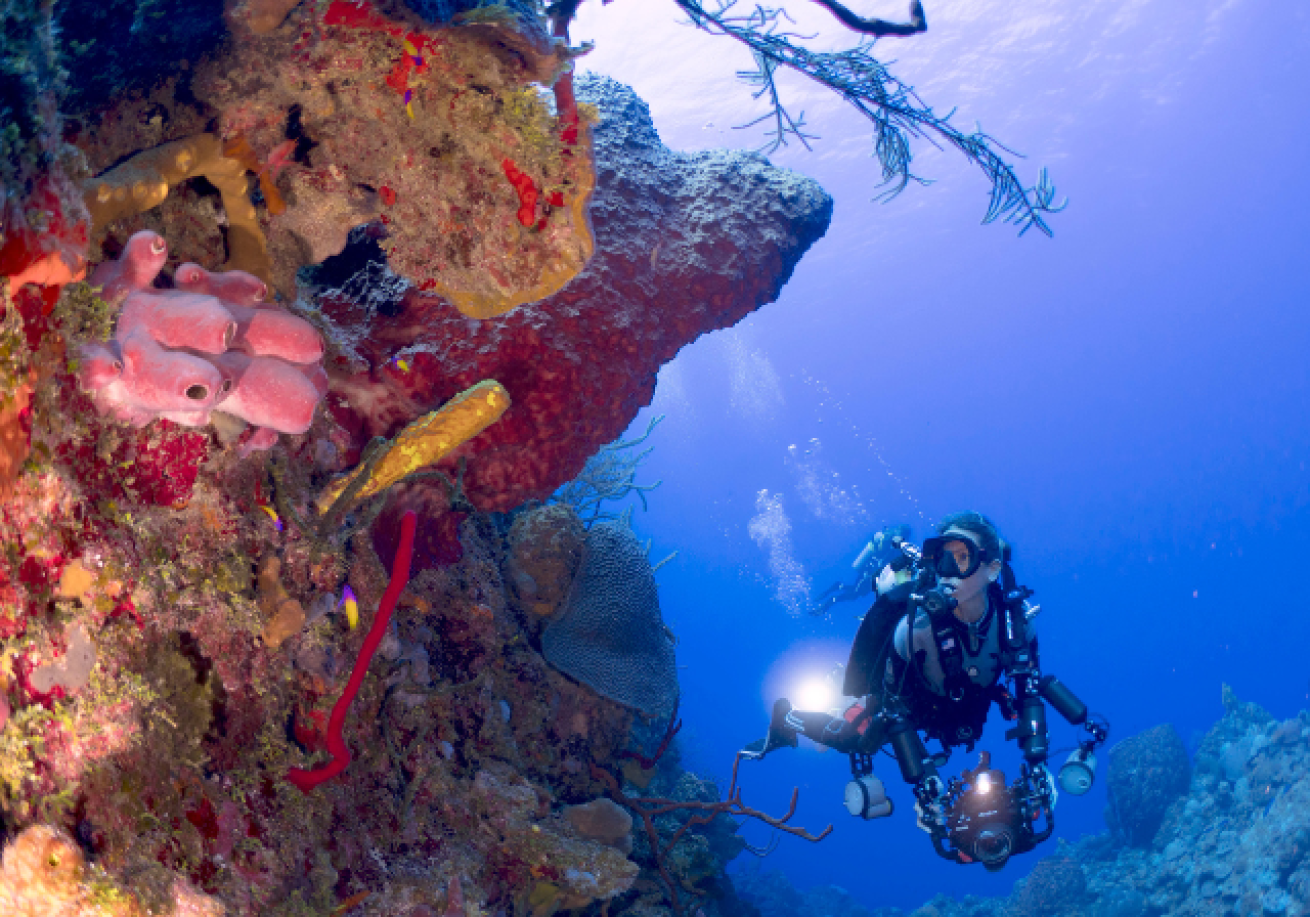
David BenzVisitors exploring Little Cayman are spoiled for choice with numerous dive sites, but the enchanting Mixing Bowl often takes the title as their favored hidden gem.
Make a giant stride off the boat into the sparkling waters of the Caribbean Sea onto Little Cayman’s Mixing Bowl dive site and you will feel as if you’ve been dropped into a secret trove of treasure — one that yields endless surprises each time you explore it. Mixing Bowl is found at the intersection of two Little Cayman walls, Bloody Bay and Jackson Bight. A delight for all your senses, the site is appropriate for divers of any skill level. As the dive boat crew ties off to the mooring, the water glitters like diamonds and the sun’s rays pour down like golden honey onto the reef. The top of the wall is in only 18 feet of water (the site is also known as Three Fathom Wall), but you can drop down to the sand flat at 45 feet, and you’ll find a bunch of colorful reef denizens congregating on the bottom, including Nassau grouper hanging out at cleaning stations. Fin through a swim-through and you may find a napping nurse shark. A hawksbill turtle or spotted eagle ray might glide past you. Your dive guide will point out macro gems sheltering in coral heads, such as tiny arrow crabs and shrimp. Best of all, you’ll enjoy loads of bottom time.
Though this dive site — along with dozens of others on Little Cayman, as well as nearby Cayman Brac — may not be as well known as the walls off Grand Cayman, it is a slam-dunk favorite of visiting divers. The underwater offerings of Little Cayman and Cayman Brac — the Cayman Islands’ Sister Islands — are just as stunning as the sites off Grand Cayman.
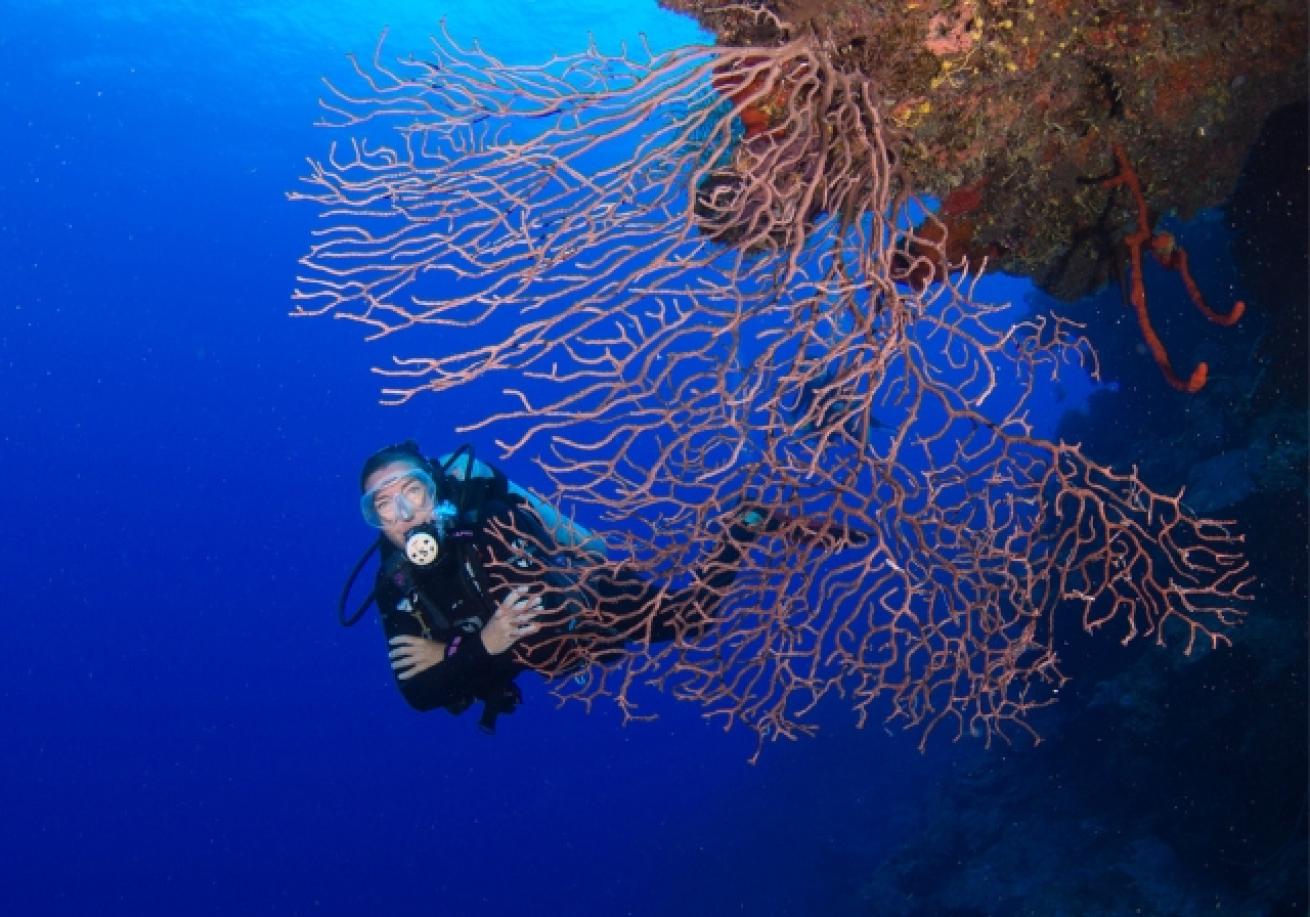
David BenzNo two dive trips are ever the same in Little Cayman thanks to the abundance of marine life.
The Cayman Islands Department of Tourism has officially named 365 dive sites surrounding the three islands, one for each day of the year. The trio of islands share many commonalities, including some of the most beautiful walls in all of the Caribbean, an exciting wreck portfolio, lush coral reefs and thriving populations of marine life. These islands rise almost straight up from the seafloor, creating a spectacular underwater landscape — pinnacles, canyons, arches and swim-throughs — that attracts all manner of marine life. No matter which island you visit, you’ll love the warm, azure waters, tropical temperatures with a delightful breeze, pillow-soft sand beaches, and of course, the world-class dive sites for every skill level.
There are differences, however. Grand Cayman boasts a lively cosmopolitan vibe. During your surface intervals, there’s not much you can’t do or find on Grand Cayman, from its global-influenced restaurant scene to its nighttime entertainment to its renowned shopping. In comparison, Little Cayman and Cayman Brac are secluded, tranquil paradises, with fewer residents and tourists and a more laid-back vacation ambience. If you’re seeking a destination where stargazing and beach lazing are the highlights, alongside some truly spectacular diving, an escape to the Sister Islands will not disappoint.
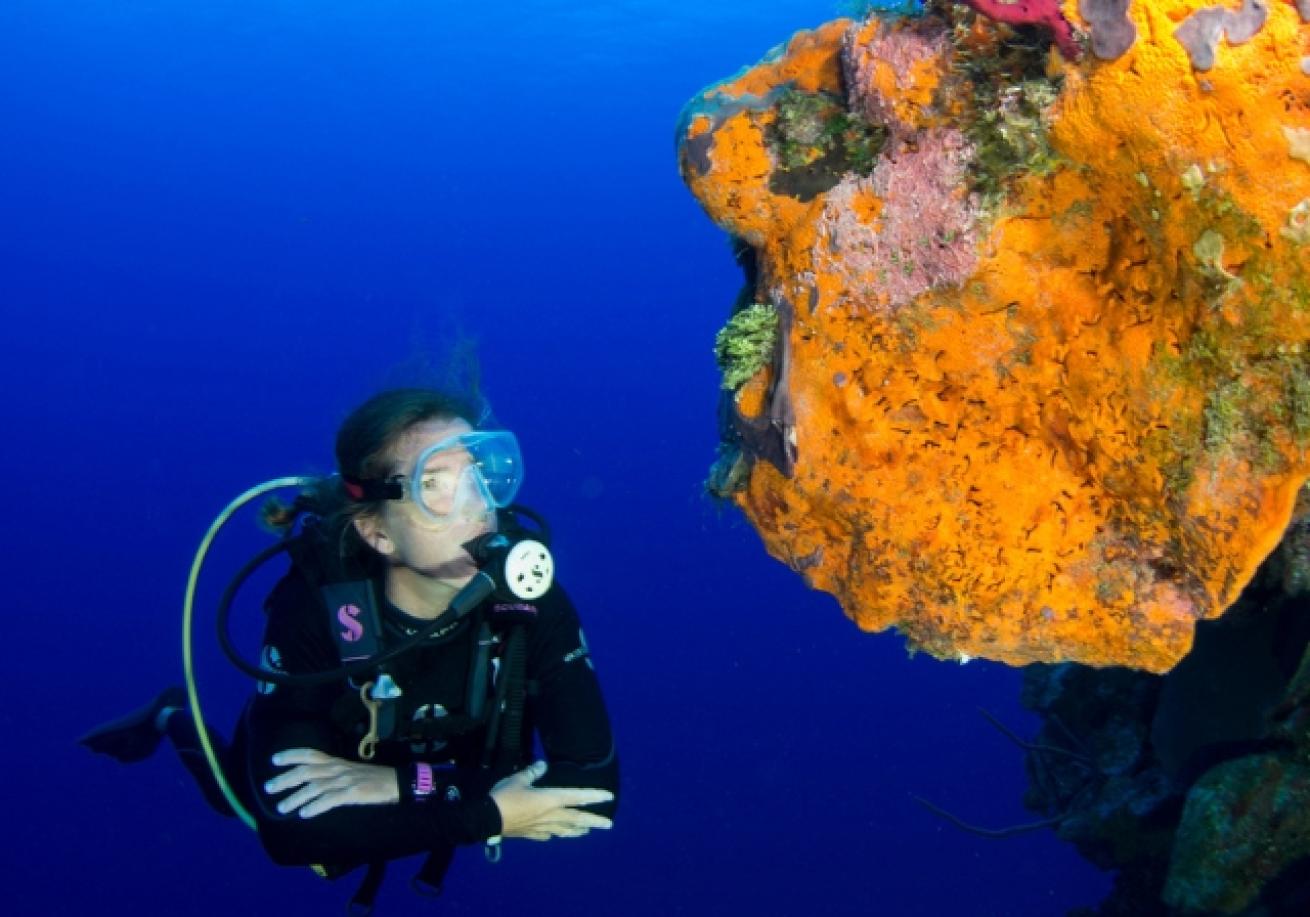
David BenzThe topography of the dive sites never fails to impress and captivate divers.
Little Cayman Hidden Gems
One of the best parts about diving Little Cayman is not a specific dive site, but rather, the remarkable conservation work conducted by the Grouper Moon Project, a collaboration between the Reef Environmental Education Foundation and the Cayman Islands Department of Environment (with support from local dive operators and industry partners) to study one of the last known spawning aggregations of endangered Nassau grouper found off the western end of Little Cayman. It is an effort that started more than two decades ago, and divers are nearly guaranteed that they’ll spot a few of these distinctive fish on various sites.
Though the drop-offs found in Little Cayman’s Bloody Bay Marine Park plummet thousands of feet into the abyss, many dive-site moorings start in only 20 feet of water. In addition to Mixing Bowl, sites such as Hole in the Wall, Randy’s Gazebo and Jackson’s Wall feature coral- and sponge-encrusted structures, fascinating passageways, turtles and mobs of reef fish greeting you every time you splash into the water. Great Wall West is another site that is accessible to both beginner and experienced divers, who can spend their bottom time in about 35 feet of water on a seabed punctuated by large coral heads. Exploring deeper on the wall has its rewards: the wall is resplendent with black corals and huge sponges.
Topside, Little Cayman is the smallest and least developed of the three Cayman Islands. The island is only 10 square miles, and with a population of fewer than 200 people, it’s not an exaggeration when locals tell you that iguanas outnumber residents. Most of Little Cayman is uninhabited, offering the kind of getaway that stressed-out people dream about, especially in winter — think sun-drenched beaches, mangrove-fringed lagoons and ponds, and the endless blues of the Caribbean Sea.
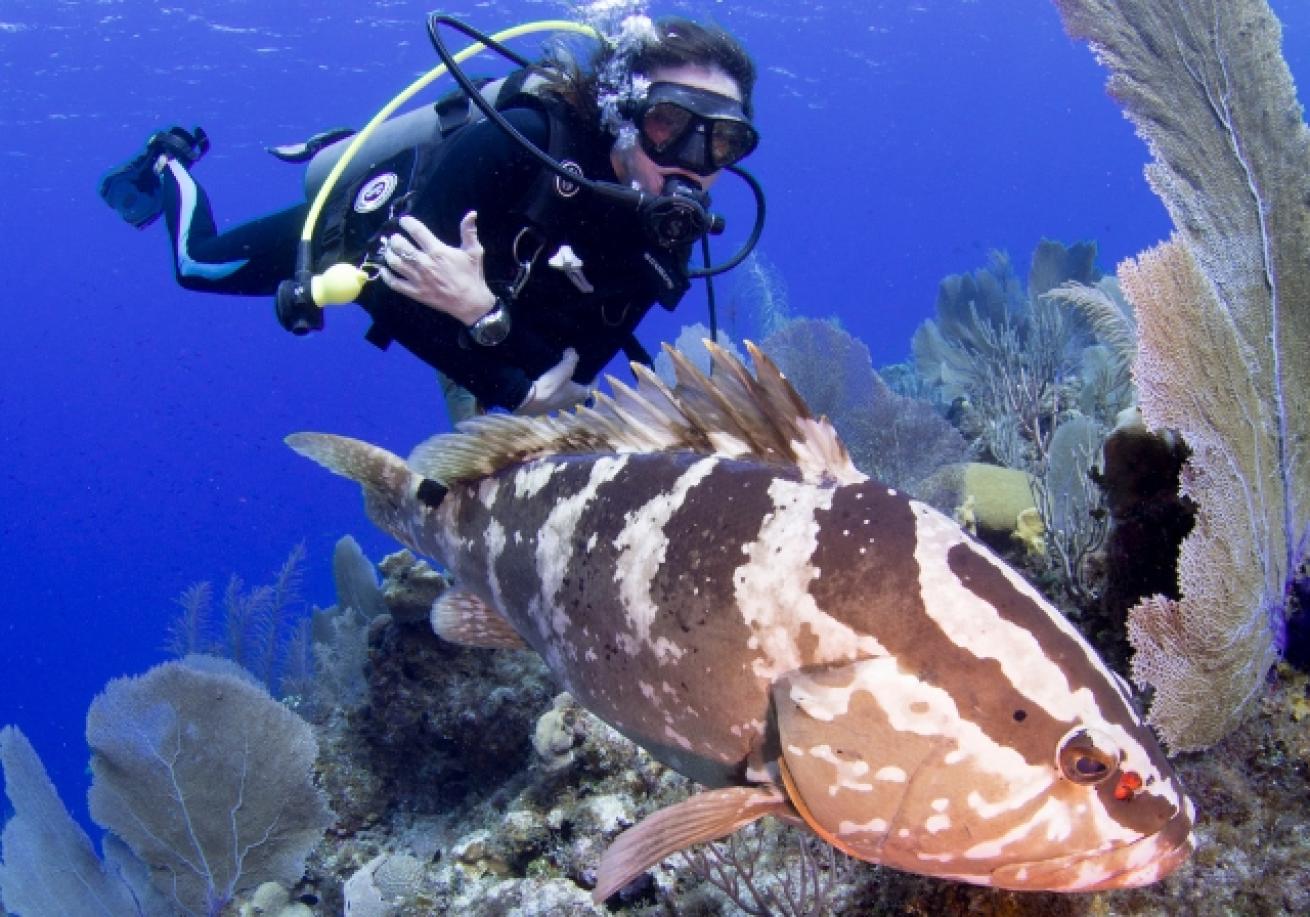
David BenzDivers are sure to encounter Nassau grouper thanks to the work of the Grouper Moon Project.
Cayman Brac Hidden Gems
Gifts of nature also draw visitors to Cayman Brac, especially adventure-seeking travelers. Named for its breathtaking 153-foot bluff, the “Brac” is 14 square miles with a population of around 2,000 residents. The resorts here are cozy, intimate and welcoming to visiting divers.
The famed Capt. Keith Tibbetts, a former 330-foot Russian warship, catapulted Cayman Brac onto divers’ must-visit destinations when it was purpose-sunk in 1996. The Tibbetts is no longer intact, but it is still an impressive wreck. Its often-photographed gun turrets offer an exciting focal point or backdrop for your underwater images or videos. Look for goliath grouper that may be hiding inside. One of the best parts of diving on Brac is that there are sites on all sides of the island offering a ton of diversity, from shallow patch reefs to sheer walls dropping off into the midnight blues of water beyond recreational depth. The dramatic drop-off Wilderness Wall begins at 50 feet and is jam-packed with invertebrates and tropical fish, all vying for real estate or shelter in a wonderland of sponge- and coral-covered swim-throughs. The site features an immense pinnacle in deeper water, and it’s a magnet for fish — lucky divers have spotted hammerhead sharks here. The ledges and overhangs at Snapper Point provide underwater rest stops for nurse sharks and turtles.
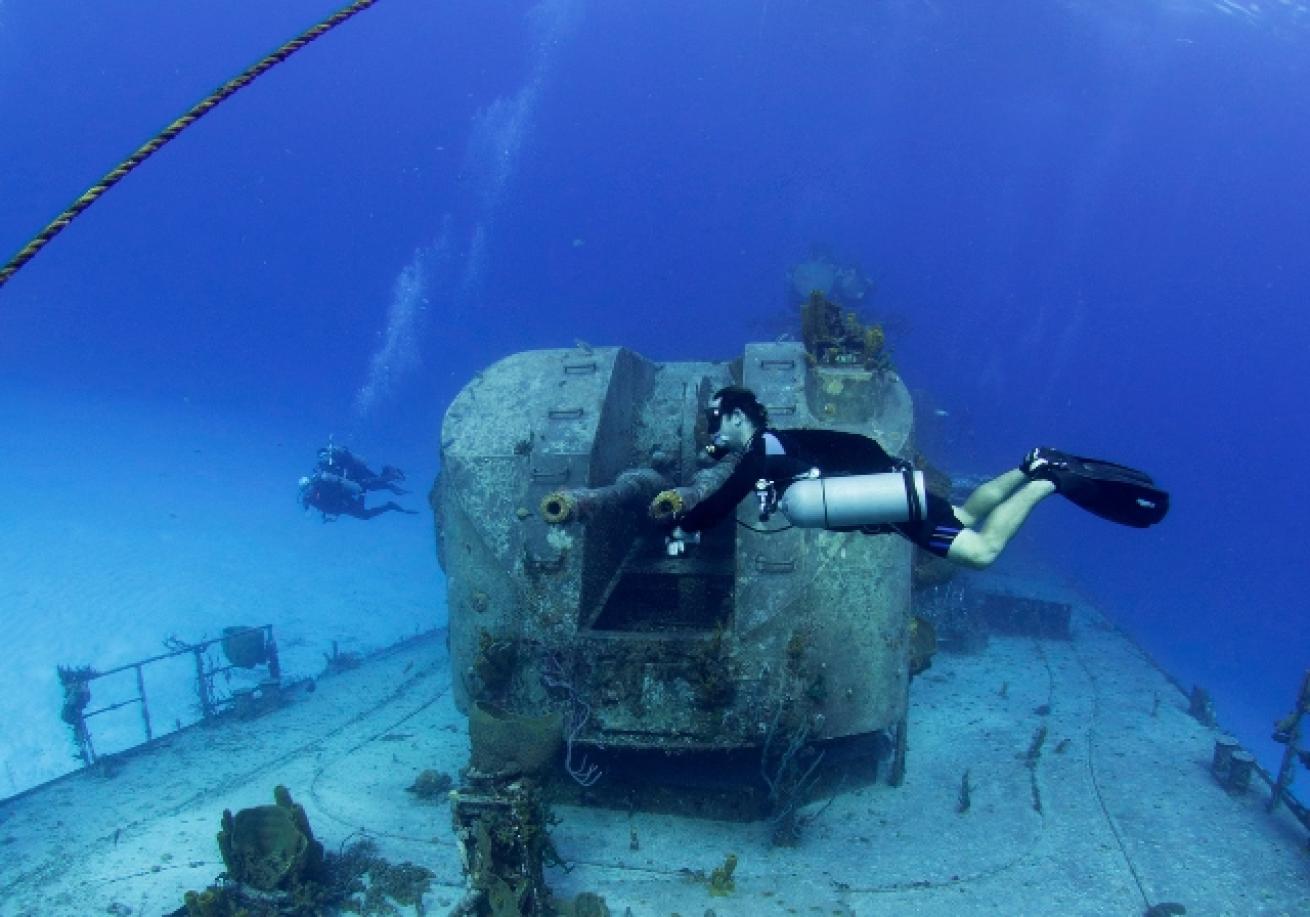
David BenzThe fractured midsection of the Tibbetts may appear as a tangled mass of metal. However, upon closer inspection, divers will discover that every fragment of the wreckage is booming with life.
Surface intervals can be spent walking, hiking or biking. You can spend the afternoon lazing in the sun at your resort’s pool, and once the sun sets, be mesmerized by the spectacular overhead show — endless, glittering stars in the night sky. Cayman Brac is the perfect island for the diver who truly wants to escape the stresses of daily life back home.
Whichever Sister Island you choose, you’ll be steeped in the beauty of nature, both underwater and topside.










